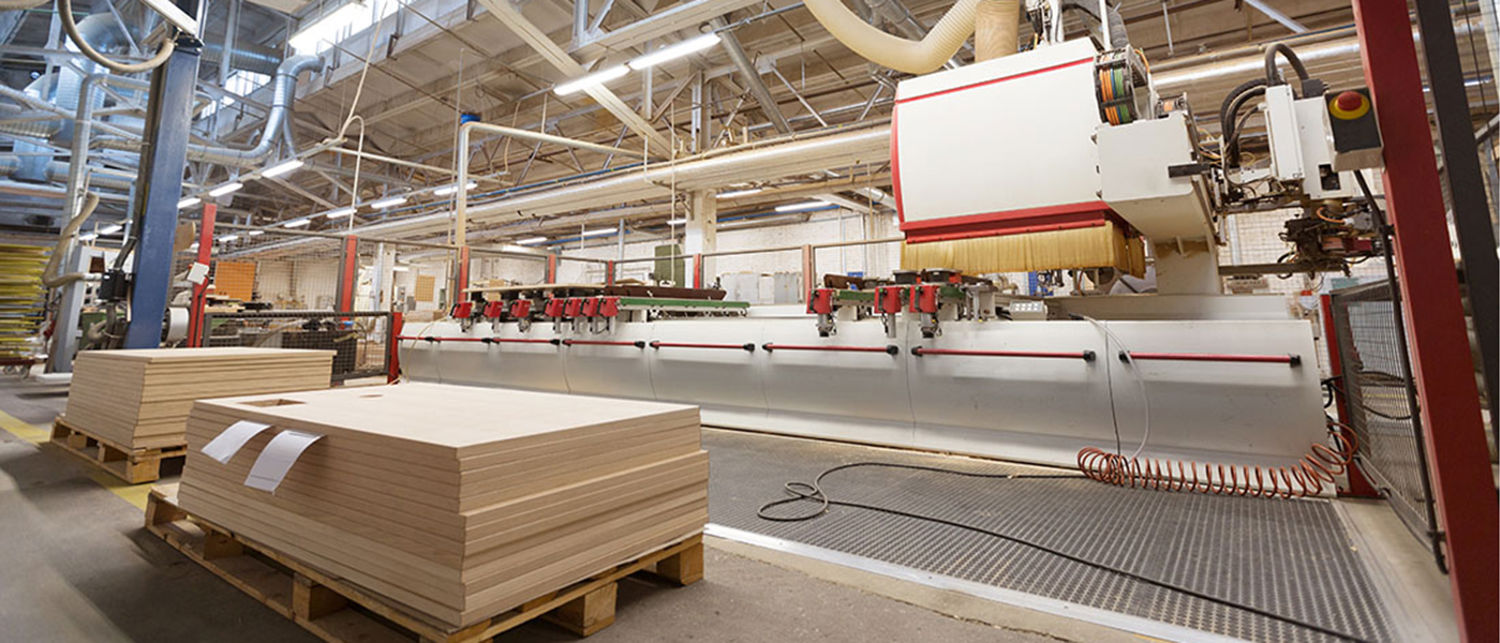Thermal Imaging for the Wood Products Industry: Enhancing Safety, Quality, and Operational Uptime
Why Traditional Monitoring Falls Short and How FLIR Thermal Cameras for Condition Monitoring and Early Fire Detection Provide the Optimal Solution


The wood products industry plays a vital role in global manufacturing, producing essential materials for construction, packaging, and consumer goods. However, operations in sawmills, lumber processing facilities, and panel manufacturing plants involve inherent risks that can lead to costly disruptions and safety concerns. From the generation of fine wood dust during cutting and sanding to the storage of large material piles, fire hazards are a persistent threat.
Flir technology offers a proactive approach to mitigate these risks by enabling continuous condition monitoring and early detection of potential fire sources. In this article, we'll explore common challenges in the industry, traditional monitoring methods, and demonstrates how advanced thermal solutions can enhance operational efficiency, reduce downtime, and safeguard assets.
Wood processing environments are prone to several fire-related hazards due to the combustible nature of materials and the demands of heavy machinery. Key issues include:
These challenges not only pose risks to personnel and property but also result in significant financial losses from production halts, equipment damage, and insurance claims. Traditional inspection methods such as periodic manual checks often fail to detect issues in real time, allowing problems to escalate.
In the forest products industry, thermocouples and spot pyrometers have long been used for temperature monitoring. Thermocouples are commonly employed to measure core temperatures during heat treatment of wood and wood packaging, ensuring compliance with standards for pest control and drying processes. They are also utilized in kilns to track combustion temperatures and in veneer or plywood manufacturing to verify bonding conditions in presses. Spot pyrometers, on the other hand, provide non-contact measurements for specific points, such as monitoring dryer exhausts or kiln surfaces to maintain consistent lumber drying. These devices are valued for their simplicity and low cost but are limited to single-point readings, which can miss broader temperature variations or anomalies across a scene.
While effective for targeted applications, these traditional tools require manual placement or scanning, making them less suitable for continuous, large-area monitoring in dynamic environments like wood processing plants.
Flir thermal imaging cameras provide non-contact, continuous monitoring to address these challenges effectively. By detecting infrared radiation, these systems identify temperature anomalies that signal potential problems before they become critical. Unlike single-point sensors such as thermocouples or pyrometers, Flir cameras capture thousands of temperature points across a wide area, creating a full thermal image that reveals hot spots, cold spots, or patterns (i.e. an uneven heating in a kiln or a jam in a conveyor) that a single-point sensor would miss.

This thermal image of a wood pile shows its potential for heating up and escalating to a fire.
This comprehensive view enables real-time detection and faster response times, with the added benefit of visual thermal maps for easy issue identification and team communication. Additionally, thermal imaging can see through smoke or steam, providing visibility where traditional methods fail.
Early Fire Detection in Storage and Processing Areas: Fixed-mount thermal cameras excel at scanning large areas, such as chip piles or conveyor systems, to spot elevated temperatures indicative of smoldering fires. By setting temperature thresholds, the system can trigger alarms at the first sign of a hot spot, preventing escalation into full-scale fires. This is particularly valuable for pile monitoring, where cameras detect heat buildup in wood chip or sawdust piles to prevent spontaneous combustion by scanning the entire pile surface and identifying internal heat pockets.
These solutions leverage Flir’s expertise in thermal technology, delivering high-resolution images and reliable performance in harsh industrial environments.

Thermal imagery can be used to monitor motors for signs of failure.
Implementing Flir thermal imaging systems yields measurable advantages for wood products facilities:
Flir thermal cameras are designed for seamless integration into modern industrial infrastructures. They support standard protocols like Modbus TCP, Ethernet/IP, and ONVIF, allowing easy connection to supervisory control and data acquisition (SCADA) systems for centralized monitoring. Video feeds can be incorporated into existing video management systems (VMS) for comprehensive surveillance. For instance, alarms from thermal detections can trigger automated responses, such as activating sprinklers or halting conveyors, enhancing overall plant automation without requiring extensive overhauls.
In the demanding wood products industry, where fire hazards and equipment failures can have severe consequences, Flir thermal imaging solutions provide a reliable path to improved safety and efficiency. By addressing key challenges through condition monitoring and early fire detection—surpassing the limitations of traditional single-point tools like thermocouples and pyrometers—these technologies not only save costs but also protect valuable assets and personnel. Facilities adopting such systems position themselves for sustainable operations and reduced risk in an increasingly competitive market.
For more details on implementing Flir products, explore our range of automation cameras and consult with a specialist.